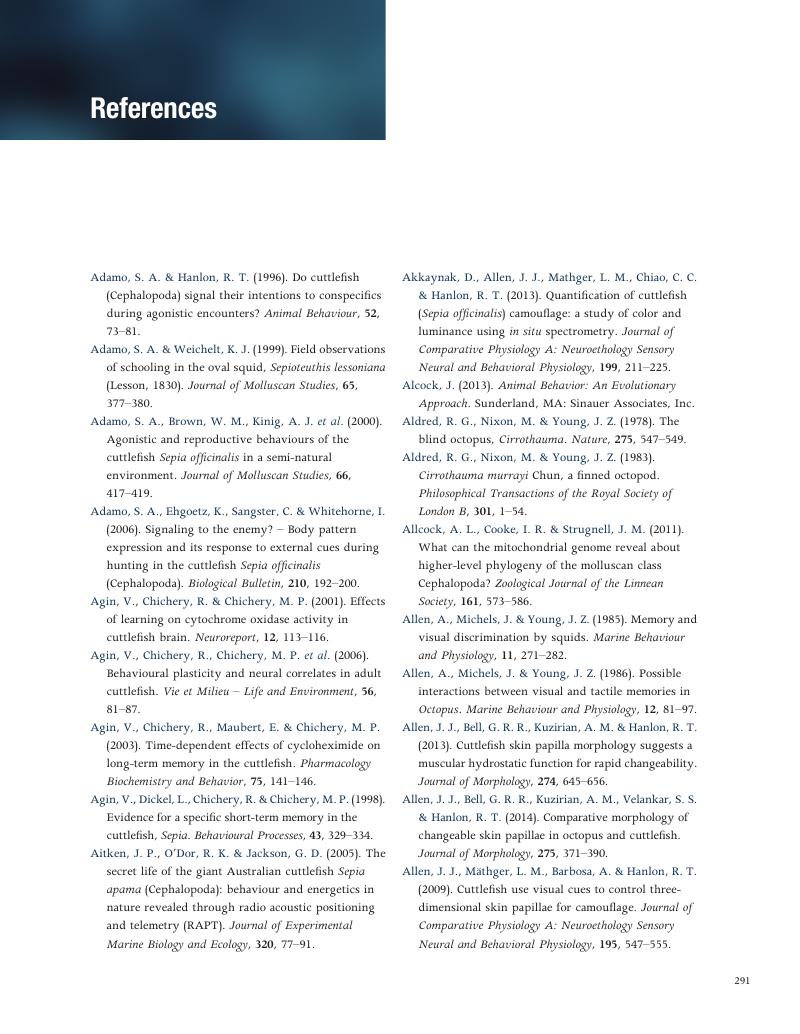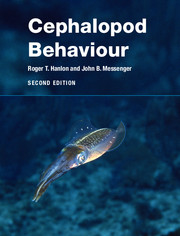Book contents
- Cephalopod Behaviour
- Cephalopod Behaviour
- Copyright page
- Dedication
- Contents
- Preface to the Second Edition
- Preface to the First Edition
- Acknowledgements
- Chapter One Introduction
- Chapter Two Senses, Effectors and the Brain
- Chapter Three Body Patterning and Colour Change
- Chapter Four Feeding and Foraging
- Chapter Five Defence
- Chapter Six Reproductive Behaviour
- Chapter Seven Communication
- Chapter Eight The Development of Behaviour, Learning and Cognition
- Chapter Nine Ecological Aspects of Behaviour
- Chapter Ten Nautilus
- Chapter Eleven Synthesis: Brains, Behaviour and the Future
- References
- Index of Organisms
- Subject Index
- References
References
Published online by Cambridge University Press: 09 March 2018
- Cephalopod Behaviour
- Cephalopod Behaviour
- Copyright page
- Dedication
- Contents
- Preface to the Second Edition
- Preface to the First Edition
- Acknowledgements
- Chapter One Introduction
- Chapter Two Senses, Effectors and the Brain
- Chapter Three Body Patterning and Colour Change
- Chapter Four Feeding and Foraging
- Chapter Five Defence
- Chapter Six Reproductive Behaviour
- Chapter Seven Communication
- Chapter Eight The Development of Behaviour, Learning and Cognition
- Chapter Nine Ecological Aspects of Behaviour
- Chapter Ten Nautilus
- Chapter Eleven Synthesis: Brains, Behaviour and the Future
- References
- Index of Organisms
- Subject Index
- References
Summary

- Type
- Chapter
- Information
- Cephalopod Behaviour , pp. 291 - 354Publisher: Cambridge University PressPrint publication year: 2018
References
References
Systematists have an irritating habit of every now and then changing the names of animals. This is not our fault. However, it can lead to confusion: the giant Pacific octopus that many of us used to know as Octopus dofleini is now called Enteroctopus dofleini. A squid often referred to in this book as Loligo pleii has recently become Doryteuthis pleii.
In response to this problem we have decided, throughout this book, to use the generic name of an animal as it appears in the original published article.



